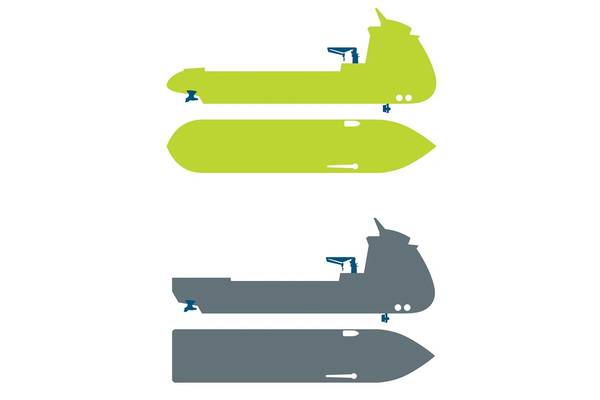
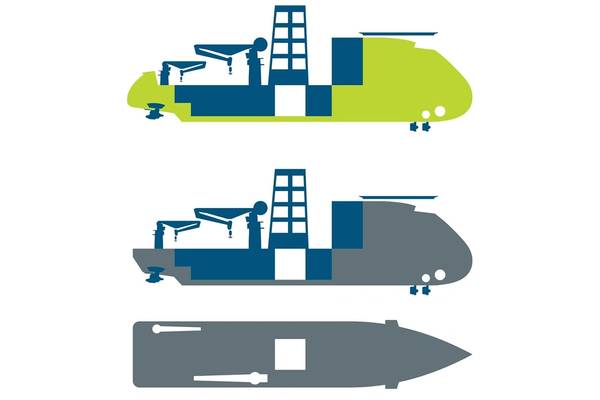
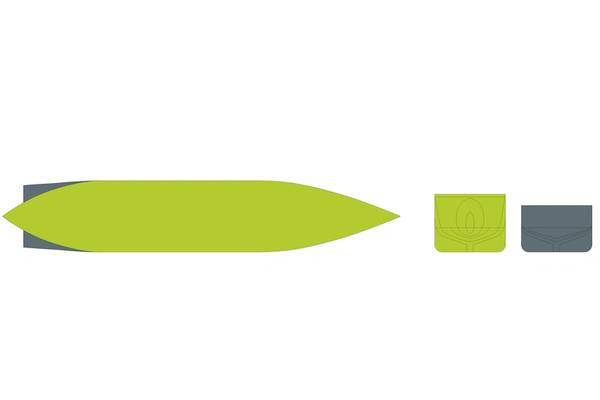
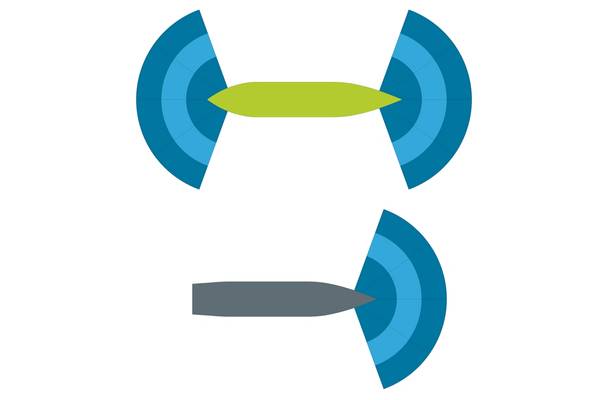
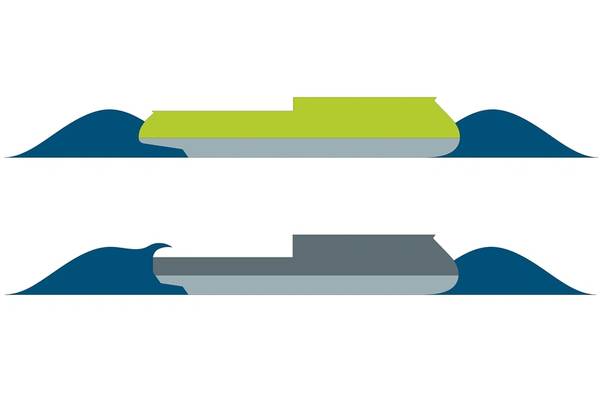
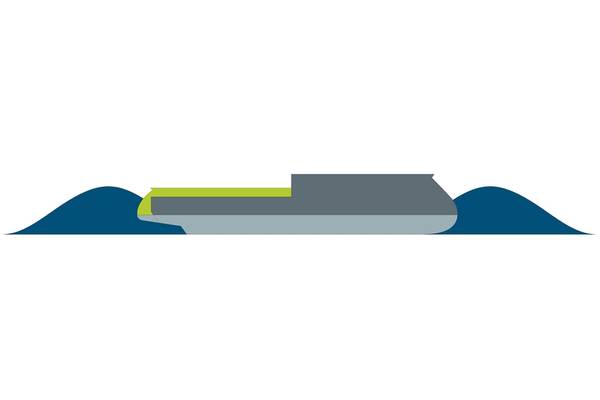
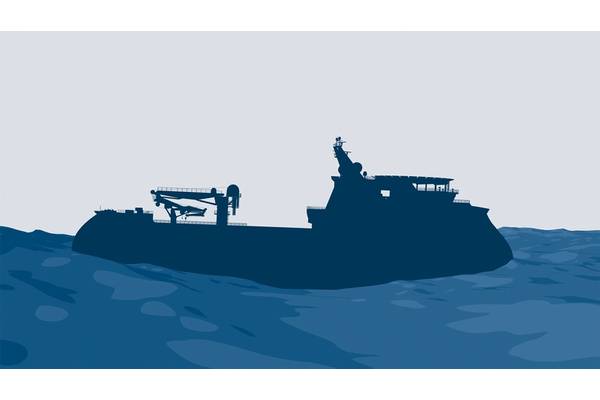
Ulstein Group introduced the X-STERN, a design feature increasing vessel operability through positive effects on station keeping, wave response, comfort and safety in harsh conditions.
An X-STERN vessel can stay on position in harsh weather with the stern towards waves, wind and current. For vessels where the best possible motion characteristics are vital, positioning the X-STERN towards the weather instead of the bow will be the captain’s natural choice.
The X-STERN leads to reduced pitch and wave drift forces, as well as eliminating slamming. Positive effects are reduced power and fuel consumption while on DP, or the possibility of operating in a wider sector with the same power consumption.
The X-STERN has several of the same characteristics as the X-BOW, and additional ice operation capabilities. Its gentle displacement reduces acceleration, pitch and heave, it improves comfort and safety, and the operational window is increased. There will be no sea on deck, and reduced ice build-up in cold climates, due to the stern shape and enclosed nature of the aft deck.
“An innovation process is a long process, in which we work strategically in order to come up with safer, smarter and greener solutions,” said Tore Ulstein, deputy CEO and Head of Markets & Innovations in Ulstein.
“We discuss operational challenges with our customers, and work on how to transfer these challenges into technical solutions which can be turned into commercial products. The X-STERN is patent-pending in several countries, including the U.S. and in the EU.”
In 2005, Ulstein Group introduced the X-BOW to the market, a design feature which increases crew comfort while giving the opportunity to keep up speed in foul weather or the option of reduced fuel consumption. Currently, close to 100 X-BOW vessels are being constructed or have been delivered world-wide. The X-STERN takes a new step in increasing vessel operability even more.
ulstein.com



